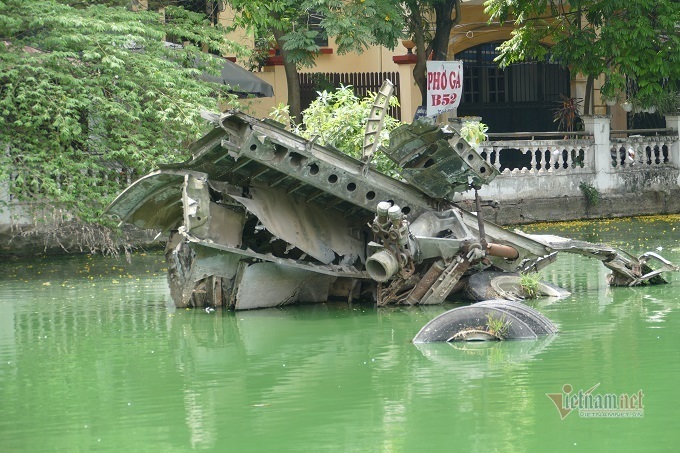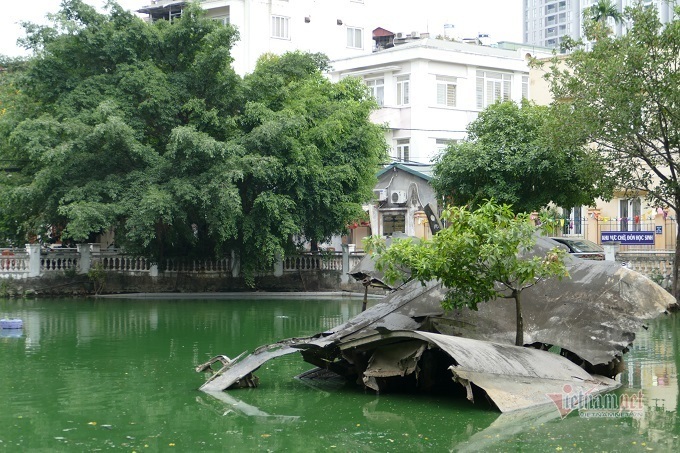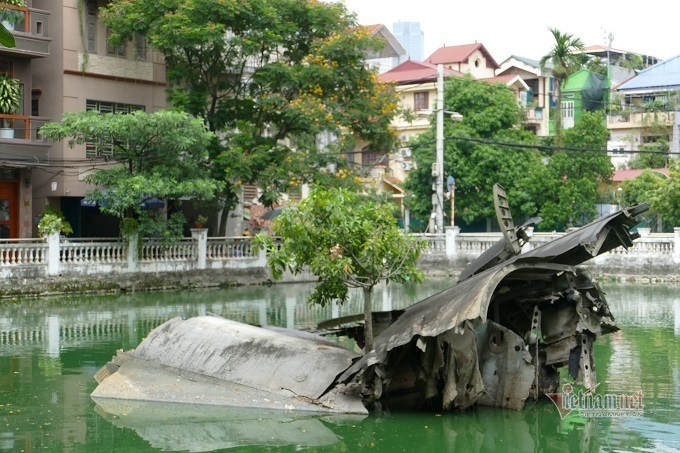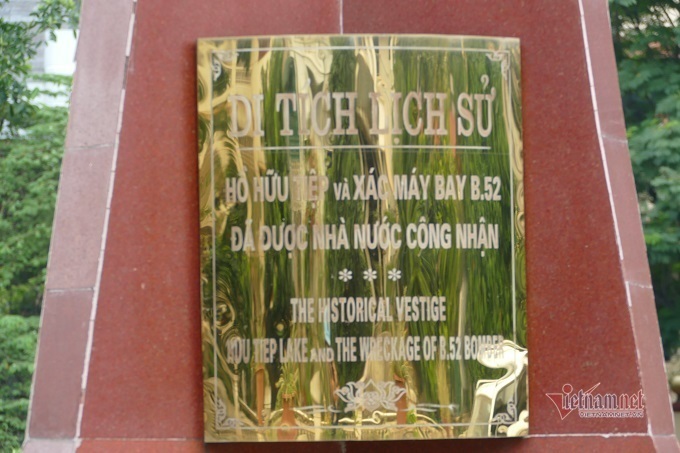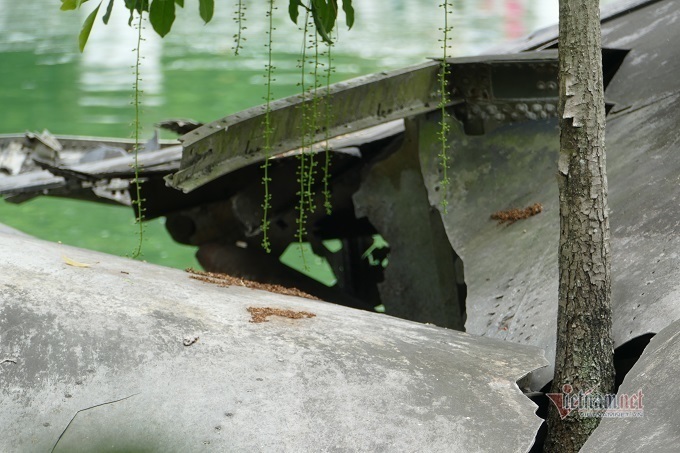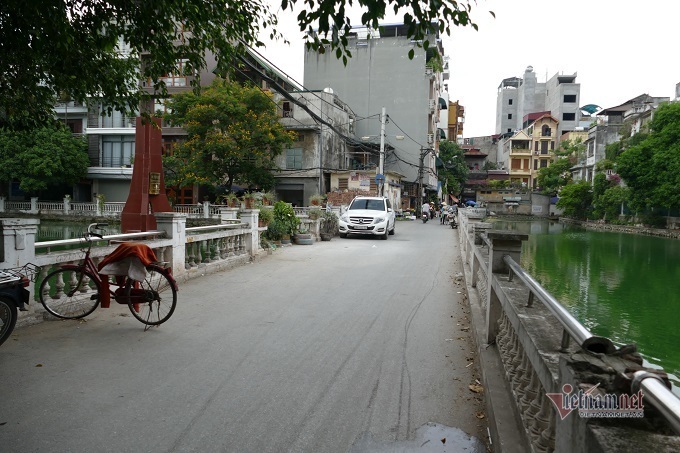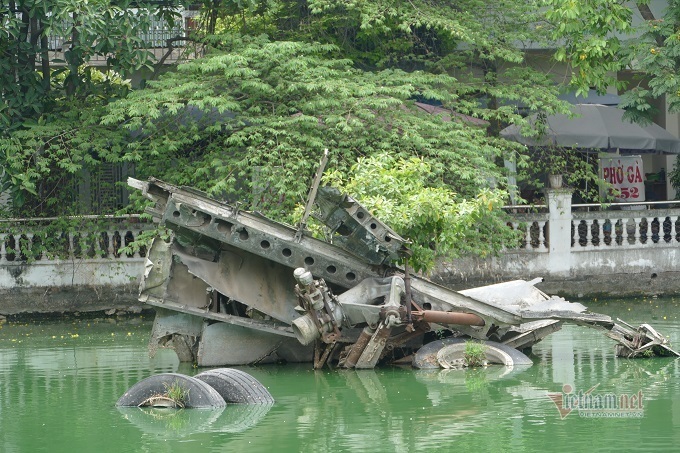 |
||
On the night of December 27, 1972 during the “Hanoi-Dien Bien Phu in the air” campaign, an American B-52 bomber was shot down by Vietnamese soldiers and part of it landed where it still remains today in Huu Tiep Lake in Ngoc Ha Ward, Ba Dinh District.
|
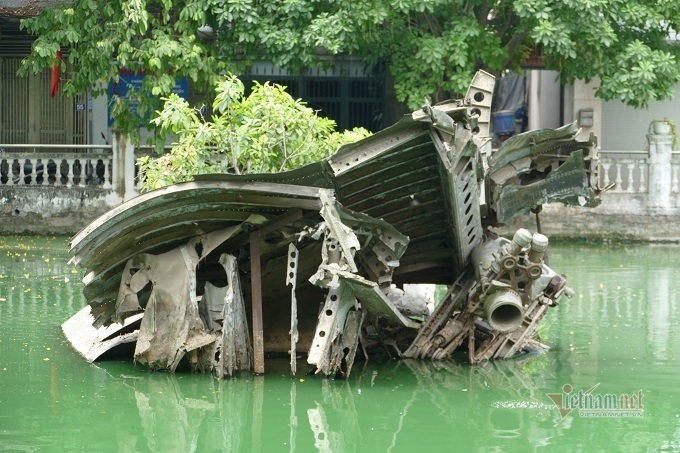 |
||
The B-52 bomber, after being shot down by rockets, crumbled into Huu Tiep Lake.
|
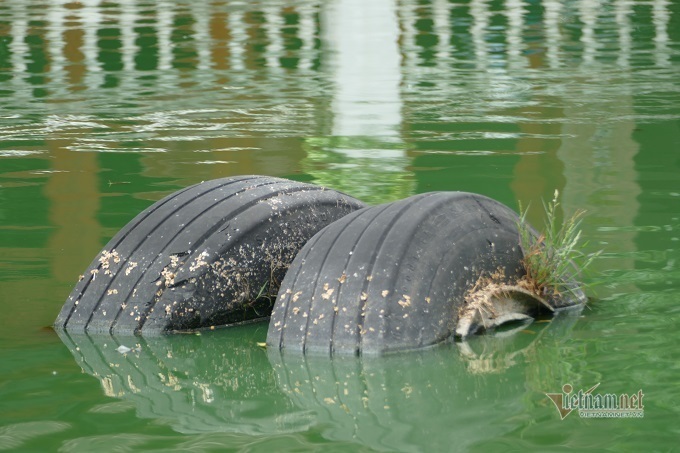 |
||
Out of the plane wheels grows moss and mold.
|
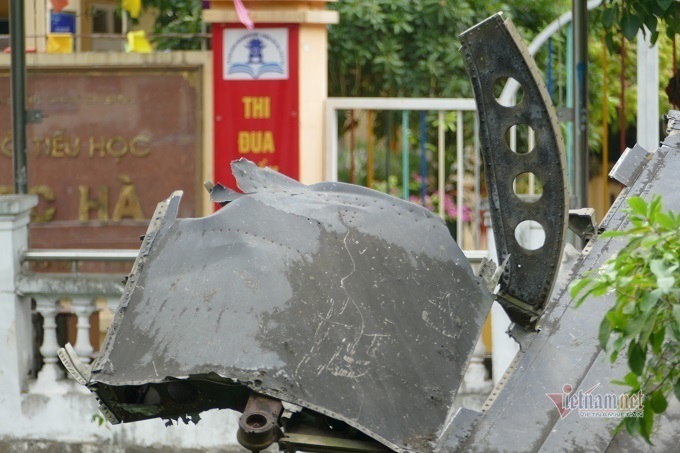 |
||
Even though it has been in the lake for 50 years, the fuselage shows no signs of rust. What is special about this B-52 bomber is that it was shot down before it had dropped any bomb. "There were around 47 bombs collected from the wreck. Some sank deep into the ground while others lay on the village roads. Army soldiers were sent to help people clear the mines and it took a week to clean up. "If the bombs had been dropped, I would probably not be here sharing this story now," Ms. Hien said.
|
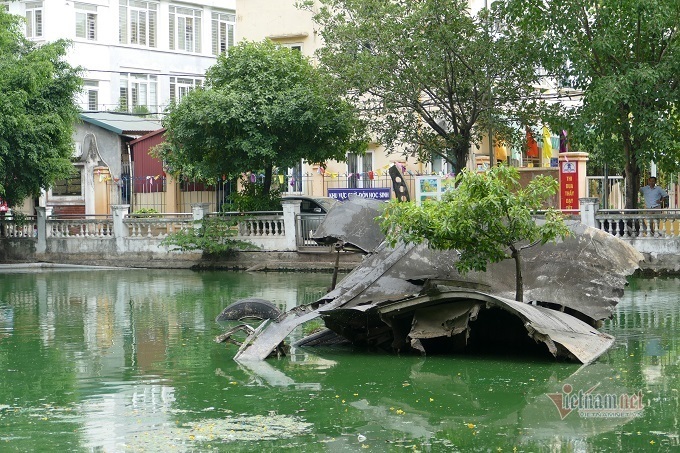 |
||
A few years ago, on the fuselage, unexpectedly sprouted a Barringtonia acutangula.
|
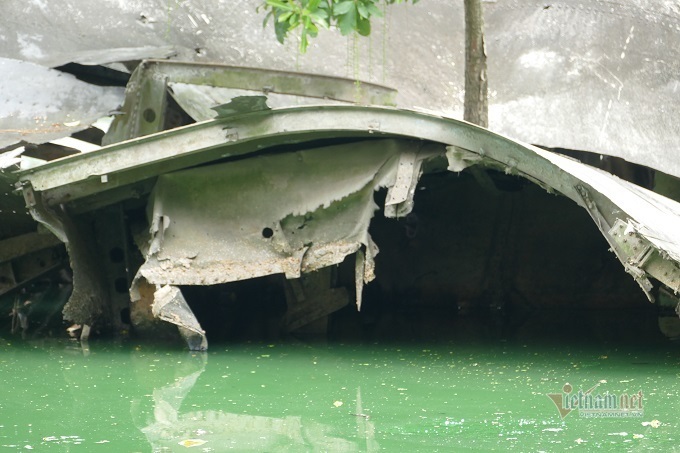 |
||
On the occasion of the 40th anniversary of the "Ha Noi - Dien Bien Phu in the air " campaign in 2012, the Hanoi People's Committee restored eight historic monument markers where B-52 bombers were shot down in the city.
|
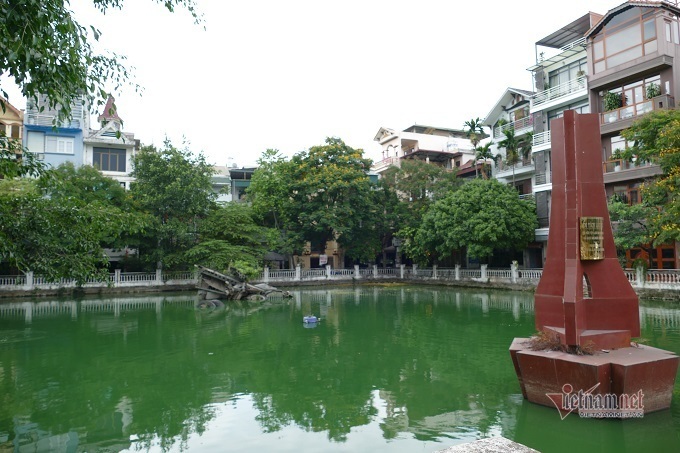 |
||
Mr. Pham Van Thuan, a local Party official, said that households discharging garbage into the lake will face fines from environmental inspectors. “The residential area also proposed embellishing and upgrading the monument. Specifically, a concrete pedestal construction in the middle of the lake will make it easier for storage and preservation of the wreckage,” he said.
|
|
The United States Air Force dispatched a series of B-52 bombers targeting North Vietnam constantly from 18 to 30 December, 1972 in the strategic bombing campaign LINEBACKER II, known as the “Eleven-Day War” which was officially ordered by US President Nixon on December 17 1972. The Vietnamese people named it the "Hanoi - Dien Bien Phu in the air". The B-52 plane, dubbed the "Flying Fortress", is famous for carpet bombing and its tremendous destructive power. The Paris Peace Accords, officially titled the Agreement on Ending the War and Restoring Peace in Vietnam, was signed on January 27, 1973, a few weeks after the end of Linebacker II. The wreckage of the B-52 Flying Fortress in Huu Tiep lake belongs to one from this campaign. The Vietnamese army and people shot down a total of 34 B-52 bombers, eight of which were located in Hanoi, after 12 days and nights of the "Hanoi - Dien Bien Phu in the air". |
Minh Khue
